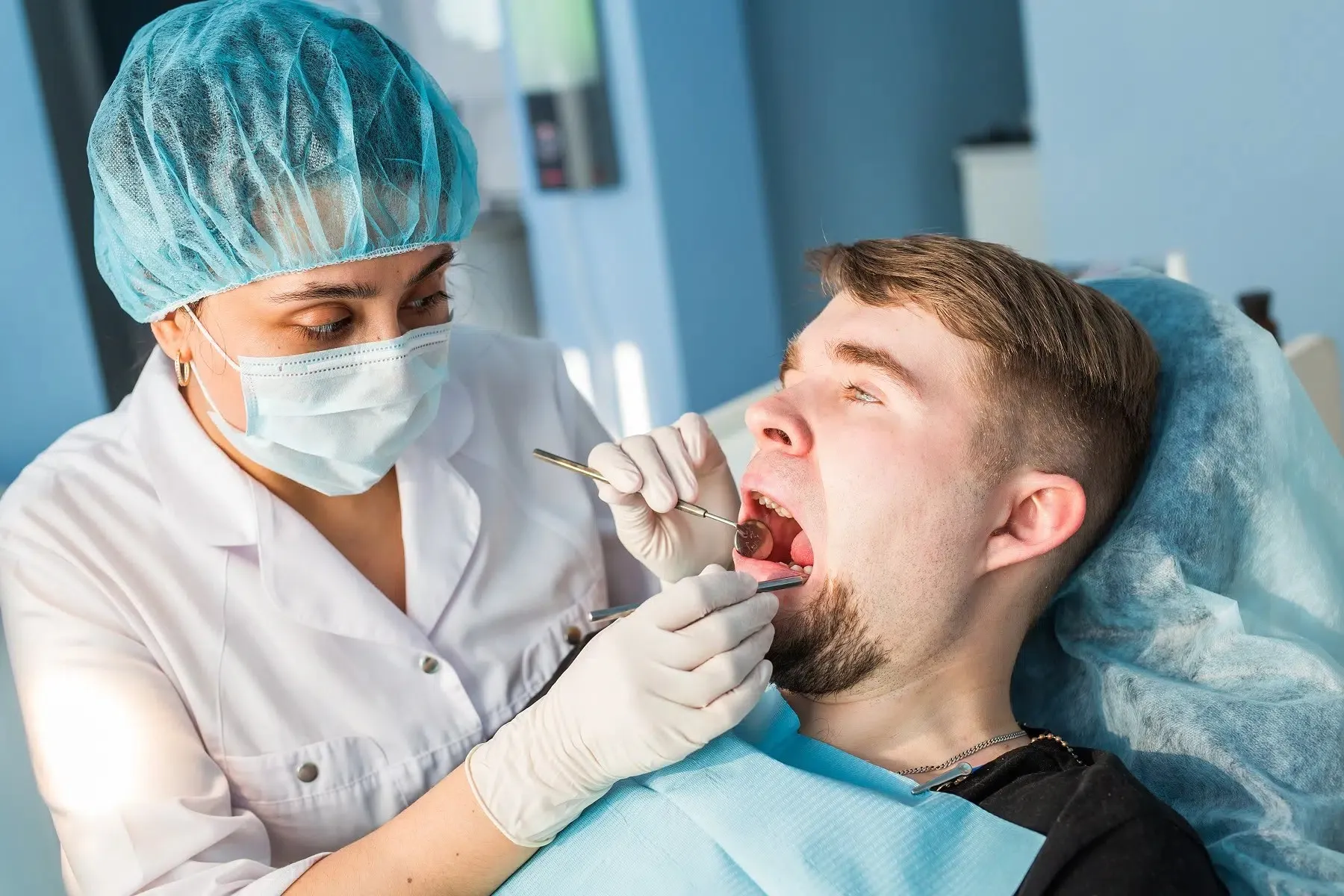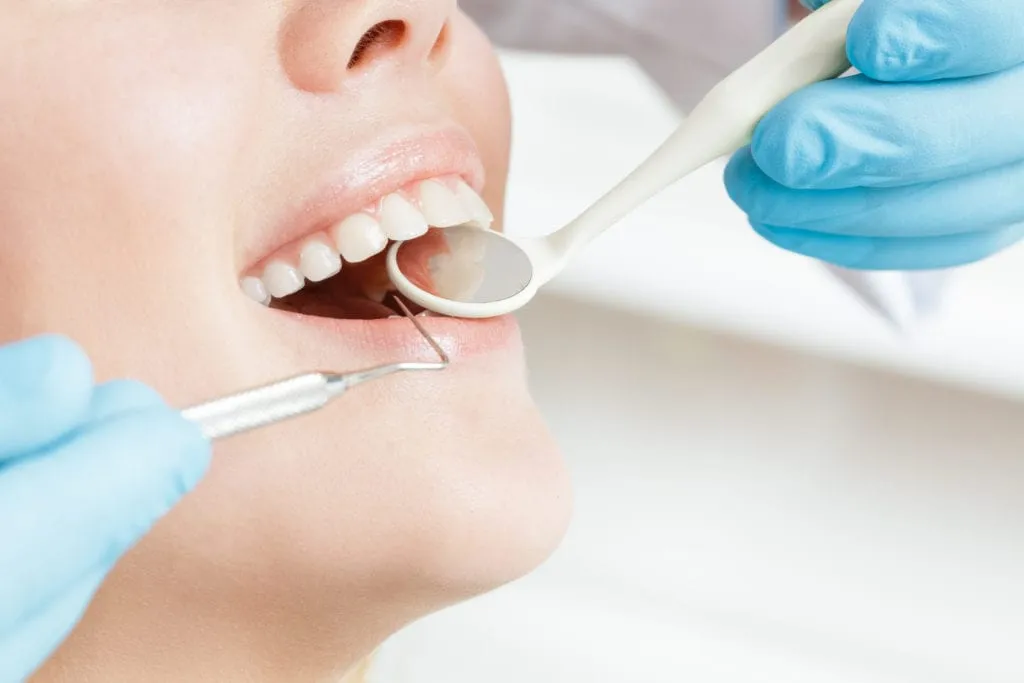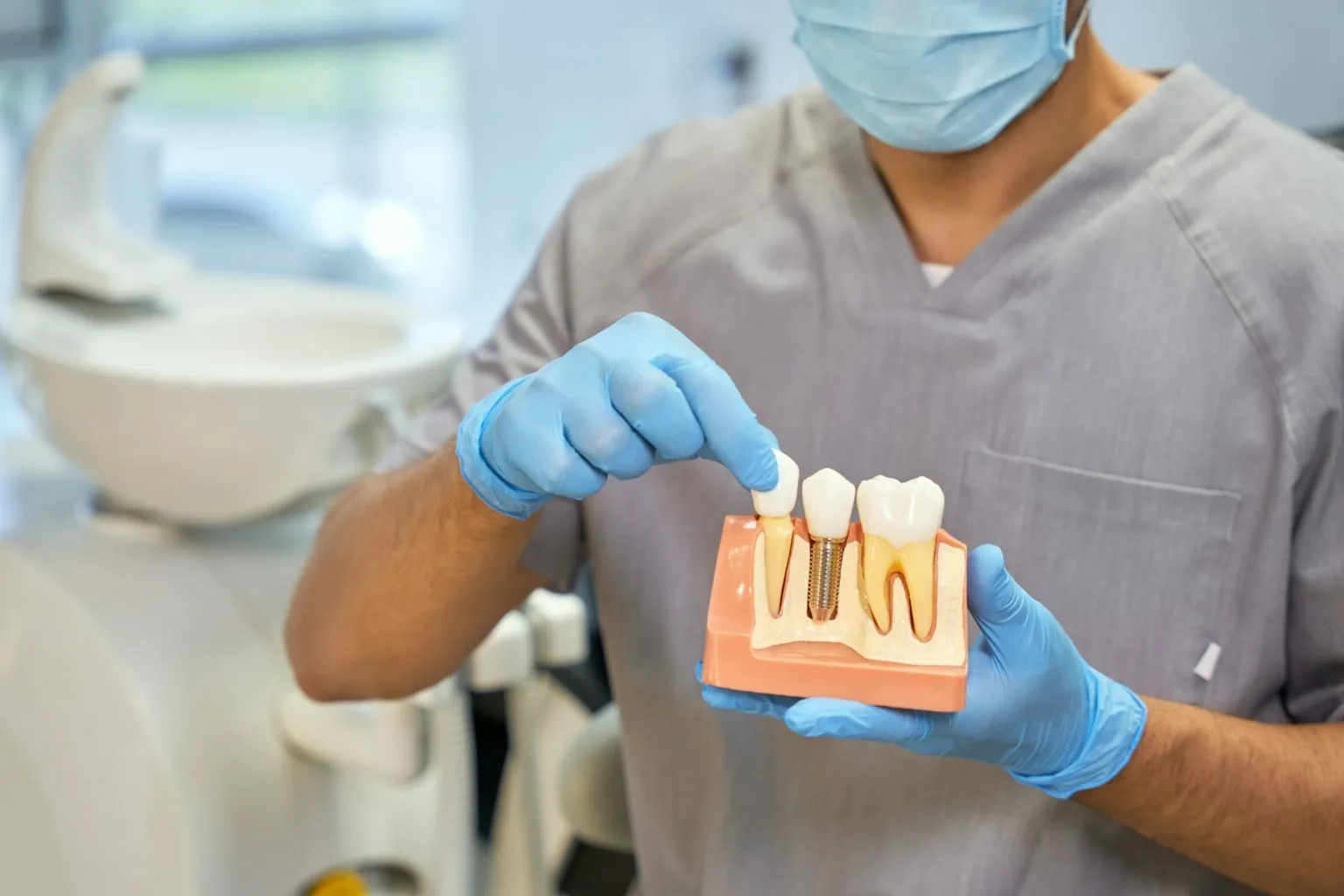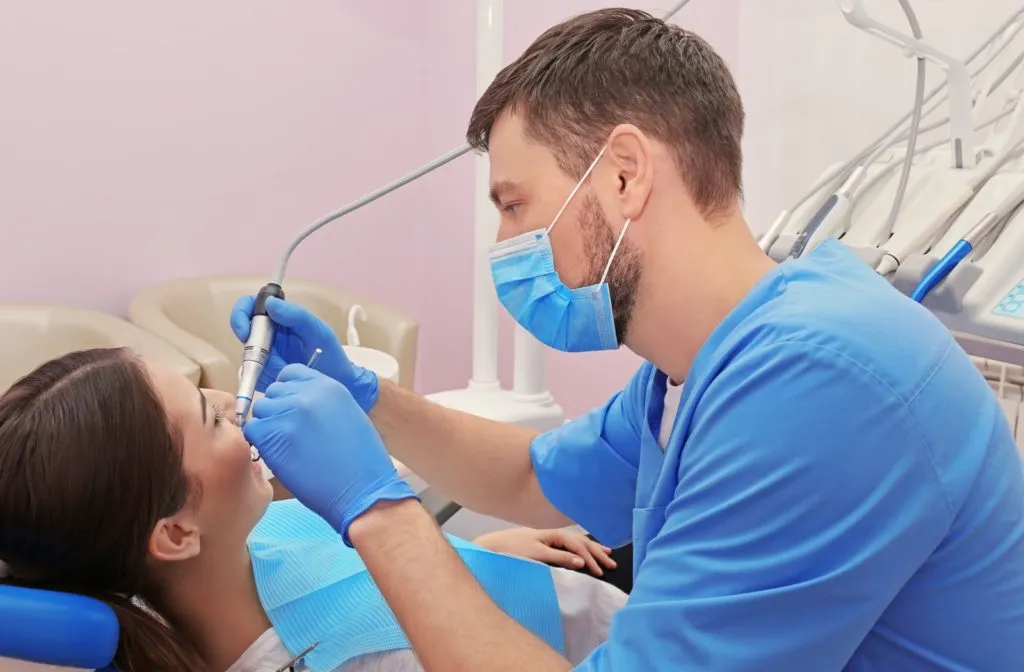
How Can a Dentist Drain and Treat a Dental Abscess Safely?
A throbbing toothache, swelling, or a bad taste in the mouth can be more than just discomfort it might be a dental abscess, a serious infection that needs immediate attention. A dental abscess occurs when bacteria invade the inside of a tooth or gum tissue, leading to a buildup of pus. This infection not only causes severe pain but can also spread to surrounding tissues and, in extreme cases, affect other parts of the body.
In this article, we’ll explain what a dental abscess is, how dentists safely drain and treat it, and why professional care is absolutely necessary. You’ll also learn what to expect during and after dental abscess treatment and how to prevent abscesses from developing in the first place.
What Is a Dental Abscess?
A dental abscess is a pocket of pus caused by a bacterial infection within the tooth or surrounding gum tissue. It forms when bacteria gain access to the inner parts of the tooth often through cavities, cracks, or untreated gum disease and the body responds by sending white blood cells to fight the infection. The accumulation of bacteria, dead tissue, and immune cells creates pressure inside the tooth or gums, resulting in swelling and intense pain.
Two Main Types of Dental Abscesses
Periapical Abscess
This type develops at the tip of the tooth’s root and usually results from untreated tooth decay or trauma. When decay reaches the pulp the soft inner layer containing nerves and blood vessels bacteria multiply and cause infection, leading to a buildup of pus near the root.
Periodontal Abscess
This type occurs in the gums or bone around the tooth. It’s commonly linked to advanced gum disease (periodontitis), where bacterial infection affects the structures supporting the teeth. Food particles or debris trapped between the gum and tooth can worsen the infection. Both forms are serious and require urgent dental care. Attempting home remedies or ignoring the infection can allow it to spread rapidly, putting your overall health at risk.
Common Causes of a Dental Abscess

Dental abscesses don’t develop overnight they usually result from underlying dental problems that have gone untreated.
Untreated Tooth Decay
When a cavity is left untreated, it can progress deep into the tooth, reaching the pulp and allowing bacteria to invade. The infection spreads down to the root, forming an abscess.
Cracked or Broken Tooth
Even a small crack in the enamel can act as a pathway for bacteria to enter the inner layers of the tooth. Over time, infection builds up and leads to abscess formation.
Gum Disease (Periodontitis)
Advanced gum disease causes pockets to form between the gums and teeth. Bacteria accumulate in these pockets, leading to a localized abscess in the gum tissue or bone.
Failed Dental Work or Deep Fillings
Sometimes, a previously treated tooth can develop an abscess if bacteria find their way underneath a filling or crown. Poorly sealed dental restorations can trap bacteria inside, leading to infection.
Weakened Immune System
Individuals with weakened immune systems due to conditions like diabetes, autoimmune disorders, or certain medications are more prone to infections, including dental
abscesses.
Signs and Symptoms You Shouldn’t Ignore
A dental abscess often starts with mild discomfort but can quickly escalate into severe pain and swelling. Recognizing the symptoms early can help you seek timely treatment.
Persistent, Throbbing Toothache
Pain is usually constant and may intensify at night or when lying down. It can spread to the jaw, ear, or neck on the same side as the affected tooth.
Swelling in Gums, Face, or Jaw
The infected area may become visibly swollen, tender, and warm to the touch. In severe cases, the swelling can cause facial asymmetry or difficulty opening the mouth.
Tenderness When Chewing or Touching the Tooth
Biting or pressing on the affected tooth can trigger sharp pain due to pressure buildup inside the abscess.
Pus or a Bad Taste in the Mouth
You might notice pus oozing from the gums or a sudden bad taste if the abscess ruptures on its own. This provides temporary relief but does not cure the infection.
Fever and General Malaise
In more advanced cases, the infection can cause fever, fatigue, and swollen lymph nodes in the neck or jaw area. If left untreated, the infection can spread beyond the mouth reaching the jawbone, sinuses, or even the bloodstream leading to a potentially life-threatening condition known as sepsis.
Why a Dentist Must Drain the Abscess Not You
A dental abscess cannot heal on its own, nor can it be safely drained at home. Attempting to pop or squeeze the abscess is extremely dangerous and can make the infection much worse.
The Risks of DIY Drainage
Trying to drain an abscess without proper tools or sterilization can cause:
Spread of infection deeper into tissues or the bloodstream.
Severe bleeding and increased pain.
Incomplete drainage, leading to recurrence and more swelling.
Even if the abscess bursts spontaneously, the underlying infection remains. Only a dentist can completely remove the source of infection and ensure proper healing under sterile conditions. Professional drainage not only relieves pain but also eliminates bacteria safely preventing reinfection and complications.
How a Dentist Drains and Treats a Dental Abscess Safely

Professional treatment for an abscess involves both draining the pus and eliminating the source of infection. This process is quick, precise, and usually provides immediate relief.
Diagnosis and Imaging
Your dentist will begin by examining the affected area and taking X-rays to locate the abscess, determine its size, and assess how far the infection has spread. In some cases, a 3D scan may be used for a detailed view of the jaw and root structure.
Numbing the Area
Before beginning the drainage procedure, the dentist administers local anesthesia to ensure you remain completely comfortable. You may feel slight pressure but no pain during the process.
Incision and Drainage
A small incision is made in the gum or tissue near the abscess to allow the pus to drain out. The dentist gently cleans the cavity with sterile saline or an antibacterial solution to flush out any remaining debris and bacteria.
In certain cases, a small rubber drain may be inserted temporarily to keep the area open for continued drainage over the next day or two.
Treating the Source of Infection
Once the abscess has been drained, the dentist focuses on eliminating the root cause of the infection to prevent recurrence.
Root Canal Treatment
If the abscess developed from a tooth infection, a root canal may be performed. The infected pulp is removed, the canals are disinfected, and the space is filled and sealed. This saves the natural tooth and prevents future infections.
Tooth Extraction
If the tooth is too damaged to be restored, tooth extraction may be necessary. Removing the infected tooth prevents the spread of bacteria to nearby tissues.
Gum Cleaning or Debridement
In the case of a periodontal abscess, the dentist will clean the infected gum pockets and remove plaque and tartar buildup to promote healing.
Medication and Follow-Up Care
After the procedure, the dentist may prescribe antibiotics to eliminate any remaining infection and pain relievers to manage discomfort.
A follow-up visit is usually scheduled within a few days to ensure that healing is progressing properly and that there are no signs of reinfection.
Aftercare Tips Following Abscess Drainage
Proper aftercare is essential to ensure full recovery and prevent the infection from returning.
Keep the Area Clean
Follow your dentist’s cleaning instructions carefully. Brush gently around the treated area and avoid disturbing any drainage tube or healing incision.
Rinse with Warm Saltwater
After 24 hours, rinse your mouth gently with a warm saltwater solution (½ teaspoon of salt in a cup of water) several times a day. This helps reduce swelling and promotes healing.
Take All Prescribed Medication
Even if symptoms improve, complete the full course of antibiotics and pain medication as prescribed to ensure the infection is fully cleared.
Watch Your Diet
Avoid hot, spicy, or hard foods for several days. Soft foods like soups, yogurt, and smoothies are best until tenderness subsides.
Monitor for Warning Signs
If swelling, pain, or fever persists beyond a few days or worsens contact your dentist immediately. You may need additional treatment or follow-up care.
What Happens If an Abscess Is Left Untreated
Ignoring an abscess is extremely risky. The infection can spread beyond the tooth and cause serious complications, some of which may become life-threatening.
Infection of the Jawbone (Osteomyelitis)
The bacteria can spread to the surrounding bone, causing inflammation and bone loss. This condition is painful and difficult to treat without surgery or prolonged antibiotics.
Spread to Sinuses or Neck Tissues
Upper jaw abscesses can extend into the sinus cavities, leading to sinus infections. Lower jaw abscesses can spread to neck tissues, causing swelling that may interfere with breathing or swallowing.
Bloodstream Infection (Sepsis)
In rare but severe cases, untreated dental infections can enter the bloodstream, leading to sepsis a potentially fatal condition that requires hospitalization. Prompt dental care is the best way to prevent these complications and protect your overall health.
How to Prevent Dental Abscesses
Prevention starts with good oral hygiene and regular dental checkups. Taking simple, consistent steps can greatly reduce your risk of infection.
Maintain Excellent Oral Hygiene
Brush your teeth at least twice a day with fluoride toothpaste and floss daily to remove plaque between teeth and gums.
Schedule Regular Dental Visits
Visit dentist every six months for routine cleanings and exams. Regular checkups allow early detection of decay, cracks, or gum problems before they progress into infections.
Treat Cavities and Gum Issues Early
Don’t delay treatment for small cavities or gum inflammation. Early care prevents bacteria from reaching the inner tooth structures.
Avoid Chewing Hard Objects
Biting on hard foods, ice, or pens can crack your teeth, creating entry points for bacteria.
Maintain Gum Health
Use an antibacterial mouthwash if recommended by your dentist and follow a healthy diet rich in vitamins and minerals that support gum and bone strength.
Conclusion: Professional Treatment Is the Only Safe Option
A dental abscess is more than just a painful inconvenience it’s a warning sign of a serious infection that demands prompt attention. Home remedies or waiting it out can lead to severe complications, including tooth loss or systemic infection.
Dentists are trained to safely drain, disinfect, and treat dental abscesses while protecting your surrounding tissues and restoring your oral health. With professional care, the pain subsides quickly, and healing begins within days.

